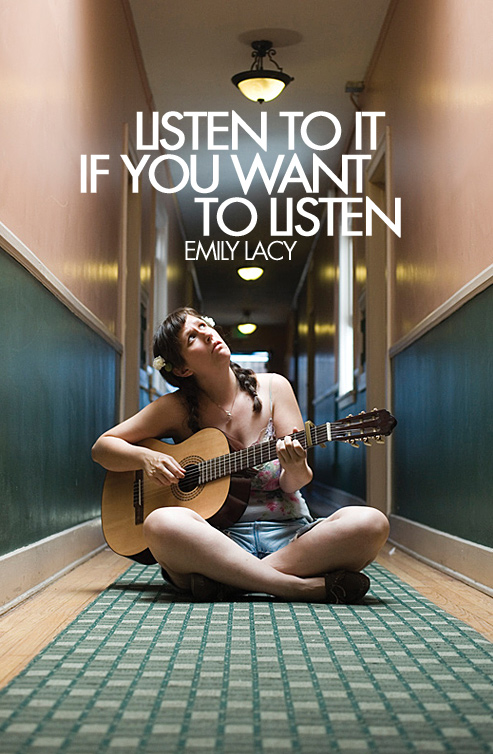
Vocalist, poetess, painter, filmmaker, sound artist, and reality experimentalist Emily Lacy finds herself again in Los Angeles with flowers in her hair, inhabiting an apartment above those buzzing arteries of East LA, Sunset and Alvarado. Fourteen self-produced albums deep, Emily lives like a modern gypsy, pleased to sing for strangers in the metro, strum for museum directors and then entertain artists at a treetop soirée all in a given day. Elegant and radical, Emily seems unaffected by social tides or opinions, instead steering her way through successes across many mediums to arrive currently in the midst of a psych-folk revolution.
Marianne Williams: You travel all over the United States playing music.
Emily Lacy: It’s been pretty heavy the last year or so. I’m learning a lot, and I feel that I started touring this heavily because I was seeking out a third kind of education that was different than undergrad, grad, or even playing out several times a week in Los Angeles within the art community here. I felt like I had to play for other people and I had to as much as I could. I wanted it to become physically second nature to get up and play music in front of five people, fifty people, five hundred people.
Music can be so mobile, I like that I can play at the Whitney Biennial and in the same day in the subway, and the next day play at somebody’s house and the same week play at a ballroom. There’s an elasticity about the application of sound and performance. I get really excited about the fact that you can do it anywhere. It’s always going to be different, always site specific, but the kind of sounds that I’m making can work in all of those places.
Marianne: Your live performance have some improvised elements.
Emily: I like doing big, weird, experimental vocal a cappella landscapes as a gateway into a folk song. Hopefully it’s creating a new space for the audience to receive the folk song. Hopefully they go through a psychedelic mind trip of eight dimensions and then they arrive at a folk song.
I’m picturing Emily at the psychedelic gateway, one hand holding the blue rose, the other hand beckoning us to step into the gleaming pool of songs surrounding her. Sadly there’s no time to realize this vision in photos as she has to be at a cookie party around 5 p.m. and is leaving LA tomorrow morning for several months. Instead, we romp through Echo Park hills, and then I photograph Emily while she plays and sings in the hallway of her current apartment located above Machine Gallery, a project space where she has had several residencies.
Emily: Los Angeles and even Machine Project are as close to a home as I have now.
Marianne: What kind of projects have you done here at Machine?
Emily: I started working with Machine a few years ago, doing a lot of shows here, but what’s really cool is that over the last year we’ve gotten into more site specific and conceptual projects. During the winter I played six weeks strait in the window here and recorded almost forty-five hours of improvised material. Most recently, aside from the Dylan thing (a recent show and record release of an album of Bob Dylan covers), there was a party at this art collector’s house who has an incredible tree house. Mark had this idea to have me playing strange music from the tree house all night with Ezra and Laura who were playing from the balcony, while Corey was knitting and drumming in the living room. I’ve been singing out the window of the apartment here, a song every time a passerby rings the bell. Mark raffled a free dental cleaning with musical accompaniment, so I went and played for someone getting their teeth cleaned. Executing all of these ideas creates a context that’s not a DIY music show, it’s not a show in a bar, it’s this other exciting place to play music and do more conceptual things.
Marianne: Like an art family.
Emily: What’s cool about working with Machine is it’s a broader experience for me as an artist than just me. I’m a part of a simultaneous organism, it’s not just about me but about the spectrum of experience I can provide.
Marianne: And the fourteen albums?
Emily: Five or six are cover albums, so that’s a different sort of thing. I have to record as often as I need to, it’s part of the process of evolution for me. At a certain point I just started making albums and decided not to worry about if no one wanted to put them out or if no one was buying them. At album fourteen, I’m past worrying about all that. I just evolve as an artist and the people who want to listen to it, listen to it.
